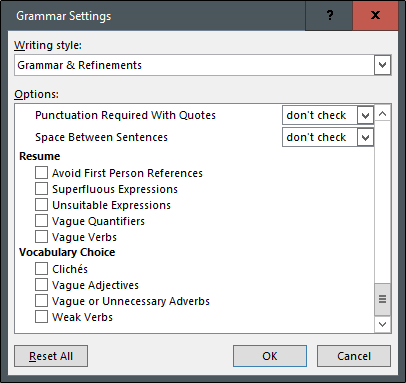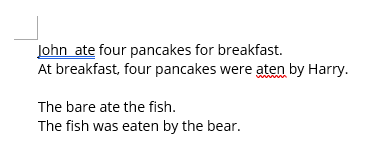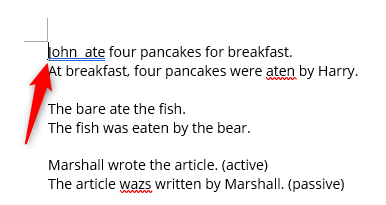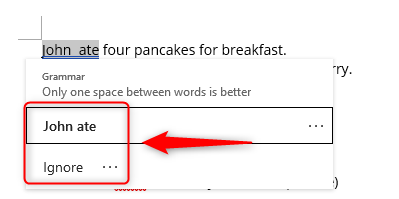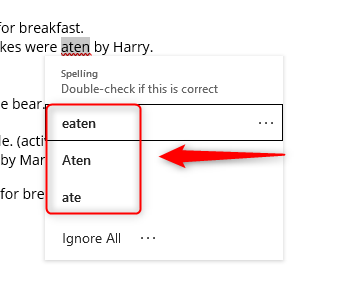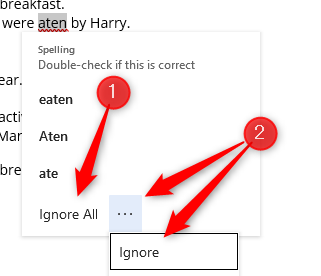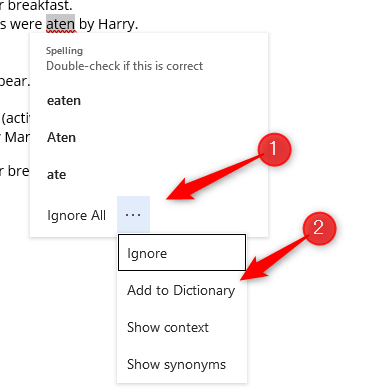Quick Links
You may already be familiar with Microsoft Word's built-in spelling and grammar checker, flagging incorrect spelling and (sometimes) bad grammar. If you're reviewing a document that's riddled with errors, you can use these keyboard shortcuts to speed up the process.
Table of Contents
- What the Spelling and Grammar Checker Can and Can't Do
- Using the Spelling and Grammar Checker With a Keyboard Shortcut
What the Spelling and Grammar Checker Can and Can't Do
Word's spelling and grammar checker is enabled by default. When a word is misspelled, Word flags it with a wavy, red underline. When there's incorrect grammar or formatting, Word flags it with two blue underlines.
In the above example, Word detected two spaces between "John" and "ate," so it flagged it as a grammar issue. It also detected "eaten" was misspelled as "aten," so it flagged that as a spelling error.
These are the basics that Word checks for by default. However, you can make Word's spelling and grammar checker work harder by enabling some additional features in its Settings menu (File > Options > Proofing > Settings). For example, you can have Word check for passive voice, split infinitives, superfluous expressions, and so on.
You can also do things like exclude specific words from the checker, check for inclusive language, ignore URLs, and much more.
So what can't Word's spelling and grammar checker do? As comprehensive as it may seem, it often fails when it comes to noticing the incorrect usage of a properly spelled word. For example, "The bare ate the fish."
In this case, Word failed to catch the incorrect usage of "bare." That said, you can count on Word to detect a lot of issues in a document, but you can't rely on it 100%. As a matter of good practice, always re-review your document before sending it out.
Using the Spelling and Grammar Checker Keyboard Shortcut
In Word, you can use the Alt+F7 keyboard shortcut to jump straight to the first error behind where the cursor currently is in the document. So, if you want to start with the first error, you'll need to place your cursor at the beginning of the document, or in front of the first error.
When you press Alt+F7, Word highlights the spelling or grammar error and gives you the option to either correct or ignore the issue. Press the up or down arrow keys to highlight the desired option, and then press Enter to select it.
Note that you can only highlight spelling and grammar suggestions with your arrow keys. If you want to ignore the suggestion, you must click that option with your mouse.
Spelling errors generally have more suggested corrections to choose from.
You can also ignore the spelling error, just as you would with the grammar error. The only difference is, with spelling, you can choose to (1) ignore every instance of that same error, or (2) just the specific error (even if it also exists elsewhere in the document).
In addition, you can also add that word to the dictionary. When you do this, Word will no longer flag the word as an error. This is useful if the word happens to be a part of an in-house style guide or something similar.
Click the three dots to the right of "Ignore All" and then click "Add to Dictionary" from the drop-down menu.
When you're ready to move on to the next error, just press Alt+F7 again. Continue doing this until all of the issues within the document have been checked.
Word's grammar and spell checker is very useful for reviewing the content within a document, but it can be quite distracting when it's throwing back errors while you're writing. If it's too distracting for you, you can turn it off as you type.



